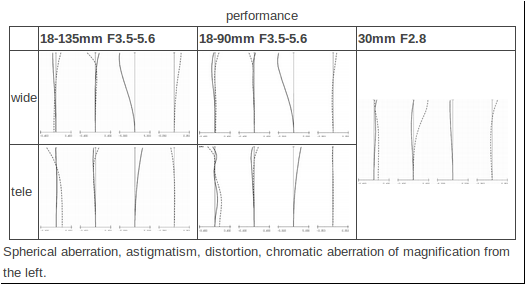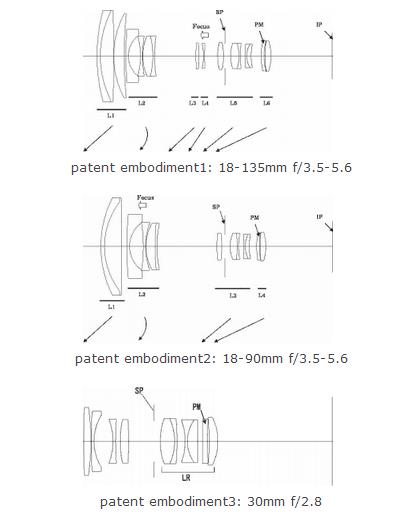Egami, The Japanese Photography blog spotted a new Canon patent. Three new Canon lenses for APS-C cameras are covered by the patent.
The new Canon lenses are 18-90mm f/3.5-5.6, 18-135mm f/3.5-5.6, 30mm f/2.8. The patent appears to refer to lenses that are resistant to temperature variation,
Canon Patents 30mm f/2.8, 18-90mm f/3.5-5.6, 18-135mm f/3.5-5.6 Lenses
Features: (Translated by Google)
Description and self-interpretation of the patent literature
- Patent Publication No. 2013-88736
- Publication date 2013.5.13
- Filing date 2011.10.21
- Example 1
- Zoom ratio 7.02
- Focal length f = 18.60 – 130.50mm
- Fno 3.59 -. 5.88
- Half angle ω = 36.29 – 5.98 °
- Image height 13.66mm
- 187.48mm – 138.01 overall length of the lens
- BF 35.60 – 70.79mm
- Effective diameter of 58.92mm front lens
- 16 pieces of 12-group lens configuration
- One piece of one aspherical surface
- One UD glass
- 6-group zoom positive and negative negative positive positive
- Inner Focus (Group 4)
- Example 2
- Zoom ratio 4.73
- Focal length f = 18.60 – 87.97mm
- Fno 3.59 -. 5.88
- Half angle ω = 36.29 – 8.83 °
- Image height 13.66mm
- 164.98mm – 125.04 overall length of the lens
- BF 35.60 – 69.29mm
- Effective diameter of 61.54mm front lens
- 13 pieces of 9 lens configuration
- One piece of one aspherical surface
- 4-group zoom positive and negative positive positive
- Inner Focus (the second group)
- Example 3
- Focal length f = 29.48mm
- Fno. 2.92
- Half angle ω = 24.86 °
- Image height 13.66mm
- The overall length of the lens 78.43mm
- BF 35.40mm
- Effective diameter of 22.43mm front lens
- 10 pieces of 8 lens configuration
- One piece of one aspherical surface
- Resin lens
- Vulnerable to temperature change
- There are restrictions on the type of coating, ghost and flare cause of
- Canon patent
- The final lens group is arranged a resin lens having a concave surface facing the image side, and place the glass lens on the image side
- Weaken the power of the resin lens, I reduce the performance variation due to temperature change
- Incident light axial rays is arranged in a low position of the resin lens, to suppress the influence of the birefringence variation of the resin lens
- Likely to occur in the concave surface of the resin lensghost is avoided by optimization of the power of the air lens in the shape of the glass lens and resin lens, in the meantime


